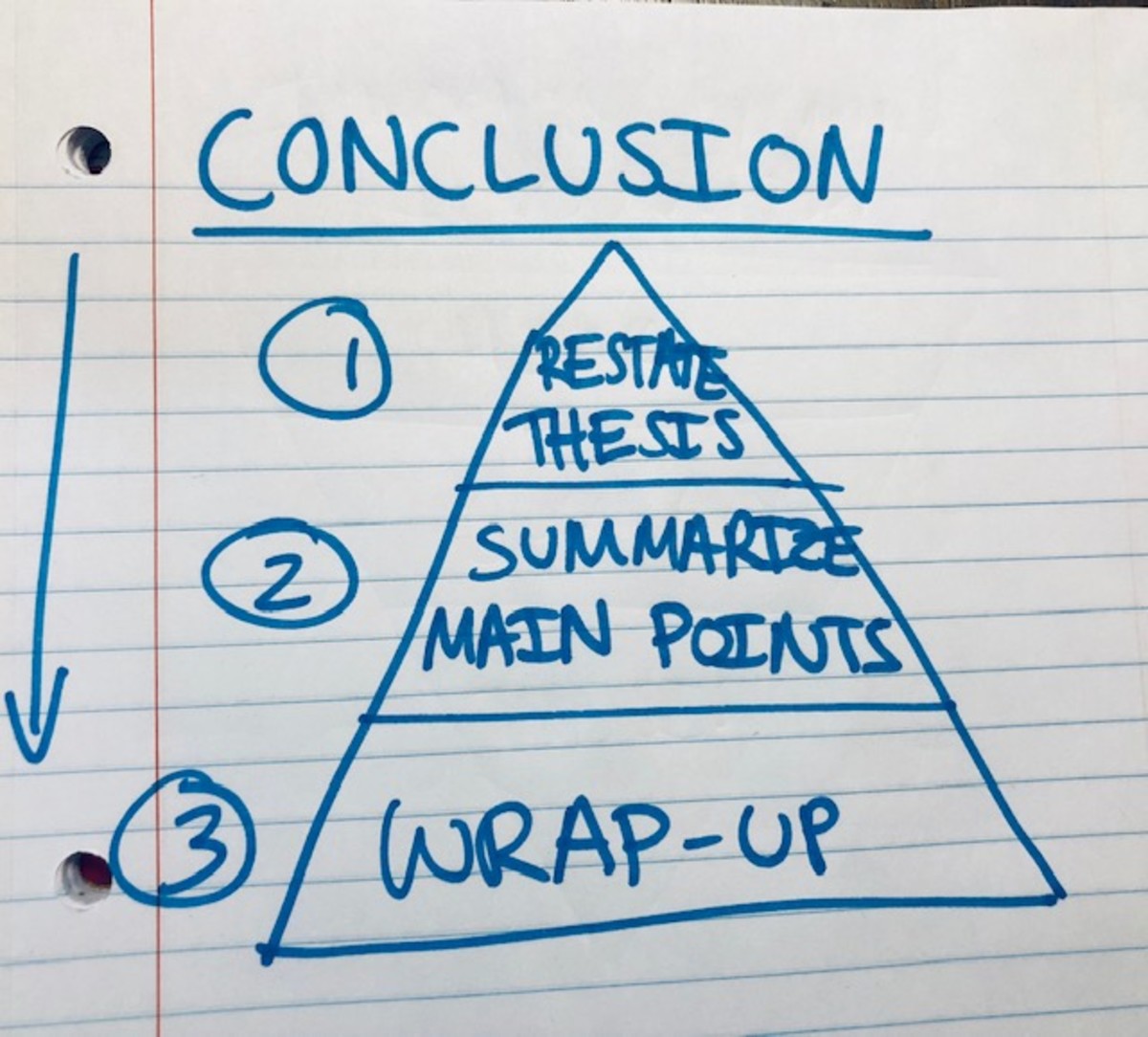Tips on How to Write an Essay

What is an Essay?
An essay is a short piece of writing on a particular subject. Not as daunting as a “term paper”, this classic essay allows the writer to tell his audience (normally the teacher) just how the student comprehends the course material or subject matter. Not only do essays allow the student to show how much he knows, it allows the students to process information, and learn more about the subject.
Although your own teacher’s definition and requirements for an essay may vary from local, teacher, and even grade level, there are three basic elements to every well-written essay: the introduction, body and conclusion.
- The "introduction" tells your audience what you are going to tell them.
- The "body" of the paper tells the audience about the subject.
- The "conclusion" of the paper re-tells the audience what they should have read on the subject.
Introduction
The introduction does just what the word says; it introduces your reader to the topic, gives some background history on the subject and allows your reader to get a feeling for where the essay might be headed. Introductions also allow the writer to state the purpose for writing or the reasoning behind the subject selection. Introductions sometimes give definitions to new terms as well.
Introductions generally range between one to several paragraphs. Depending upon the complexity of your paper, the introduction may include a thesis statement or hypothesis.
Before writing your introduction review what your teacher expects. For example, some teachers want very specific information or a very specific format. A good example of an introduction might be:
This paper will discuss the various ways to pass a basketball.
However some teachers may want even more information, such as:
This paper will discuss the various ways to pass a basketball and the benefits of the methods at different times in the basketball game.
Body
The "body" is the bulk of the paper— sandwiched between the introduction and the conclusion— where the writer builds upon ideas emphasized in the introduction.
Good writers include facts, observable data, and relevant information such as names, places and history that reinforces the thesis or hypothesis. Keep opinions to a minimum in an essay, unless you can back them up with data, or unless your specific assignment specifically calls for your opinion.
Remember to refer back to your introduction often. If the information doesn't relate to the introduction it may not be important enough to include in your paper.
For more writing tips, check out another article "How to Write a College-Level Paper"
Conclusion
Think of the conclusion as the “happy ending” to your essay. Don’t just stop writing, re-tell the reader what he has learned by reading your essay, and reinforce important aspects of the topic. Consider calling readers to action in your conclusion by challenging them to change their mind or support your ideas and put them into practice.
Restate your thesis (purpose statement) or rewrite the introduction so that readers are left with the clear point you are trying to make. Although it may seem repetitive, may teachers ask that the conclusion retells what you stated in the introduction.
Remember, although essays will vary in topic, length and purpose, almost every well-written essay will include these three basic parts: the introduction, body and conclusion.









